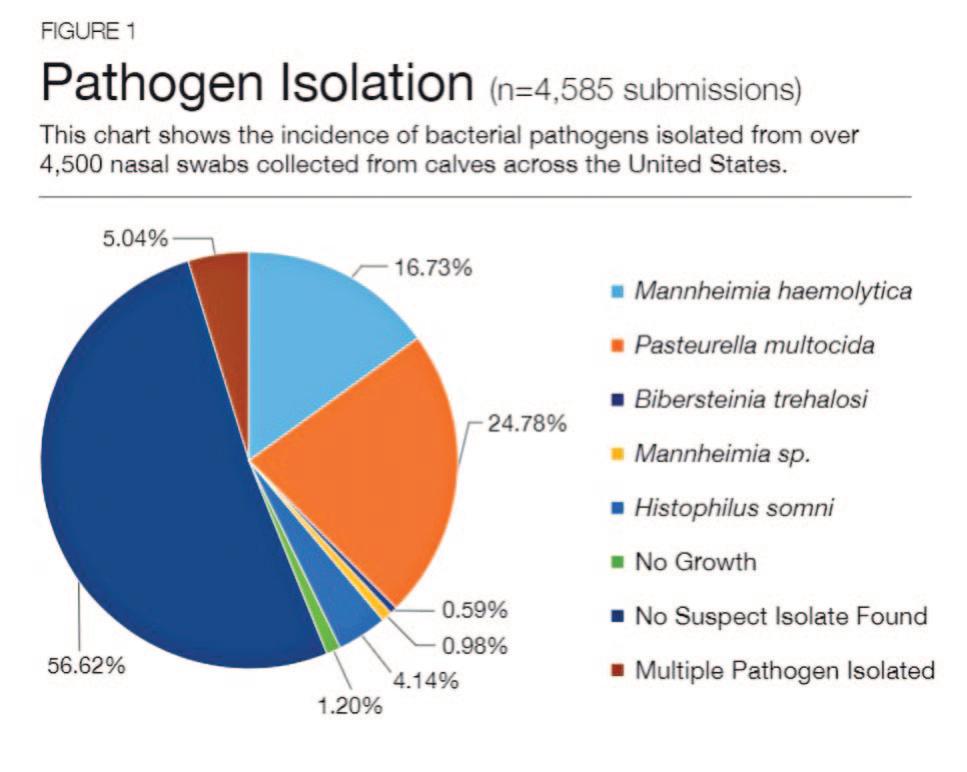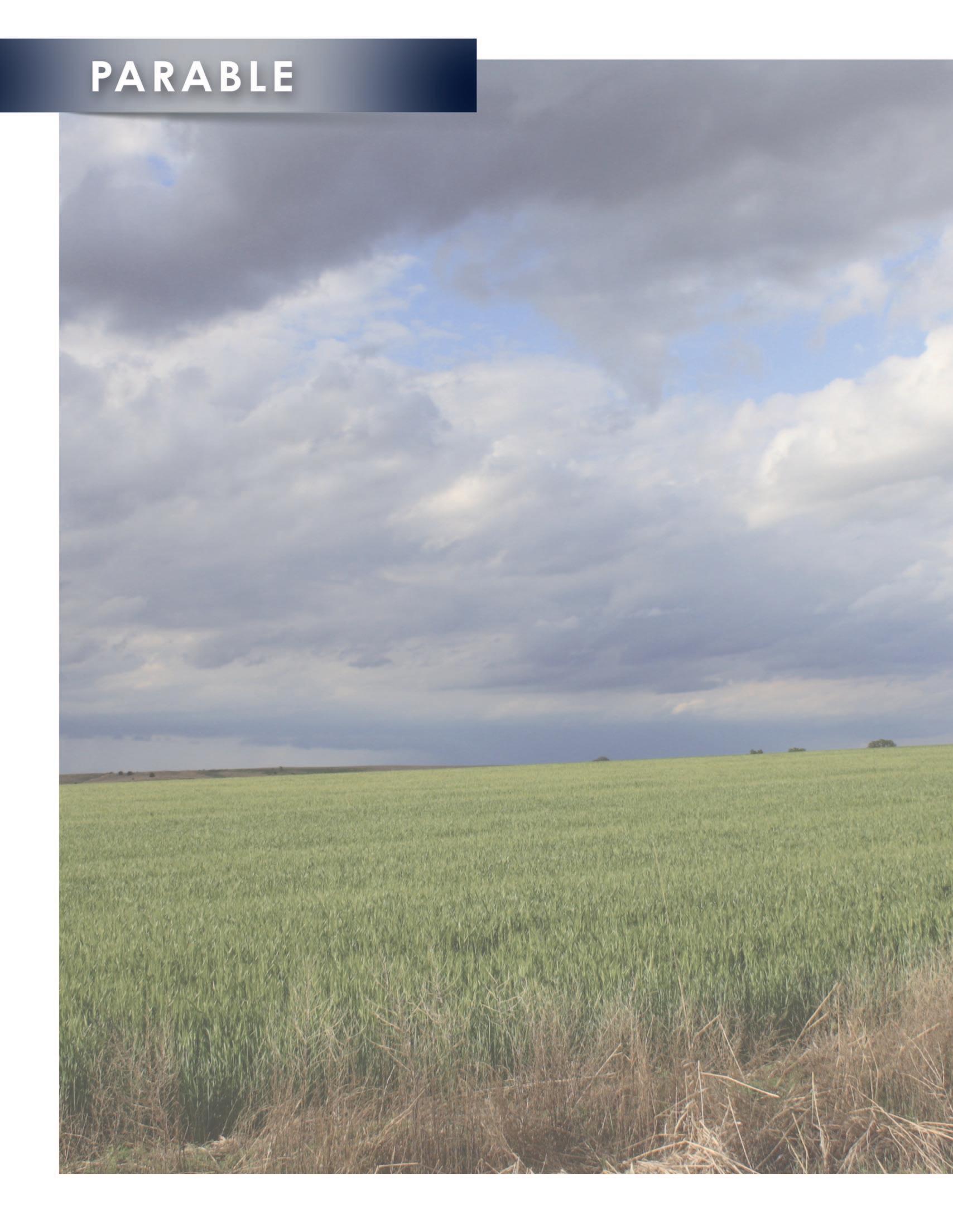
4 minute read
New Strategies for the Prevention of BRD
By: Kevin Hill, D.V.M, Technical Services Veterinarian, Merck Animal Health
Bovine respiratory disease (BRD) impacts all segments of the beef industry and is by far the leading health cause of economic loss to producers. BRD can affect calves on the ranch or in the feedlot, so every producer needs to implement the most effective strategies available to limit losses due to pneumonia. Everyone understands “an ounce of prevention is worth a pound of cure,” so it’s critical to focus on prevention to gain ground against this costly and deadly disease.
Prevention strategies often are limited to adjusting vaccination protocols, but real prevention requires a more holistic approach to be effective. Besides vaccine decisions, a comprehensive program will include plans regarding genetics, environmental management, biosecurity and nutrition, as well as parasite control. These factors can significantly contribute to a stronger immune system that will optimize disease protection. Conversely, failure in any of these areas can undermine herd health and performance. It’s important to address all of these subjects with your veterinarian.
Vaccine choices
Vaccine decisions are critical for our herd health success, and oftentimes are one of the quickest ways to improve herd immunity. The basic vaccine decisions we need to make are:
1. What do I vaccinate for?
2. When should I vaccinate for best results?
3. What kind of vaccine should I use?
These questions are best answered with your veterinarian, but here are some thoughts to consider in that conversation.
What do I vaccinate for?
The focus of this article is respiratory protection, but other core vaccines should provide clostridial protection and reproductive protection for the breeding herd. The bacteria most commonly associated with BRD are Mannheimia haemolytica and Pasteurella multocida.
It was previously thought that M. haemolytica was a more prevalent agent causing BRD than P. multocida. But a recent study determined the occurrence of P. multocida in calves entering the feedlot was much higher than expected – even surpassing the rate at which M. haemolytica was present.1 These findings are important because P. multocida has not always been recognized as a primary cause of pneumonia.

Haemophilus somni is another frequent cause of bacterial pneumonia, but much less common than M. haemolytica and P. multocida. These findings are consistent with a large study conducted by Merck Animal Health with Dr. Brian Lubbers at Kansas State University.2 (See Figure 1.)
Viral protection also is critical, as it’s frequently a viral infection that weakens the immune defenses and allows bacteria to gain access to the lungs. For vaccination purposes, BVD and IBR rank as the most important viruses followed by BRSV and corona virus. This information also reinforces the need for vaccines to protect against multiple causes of BRD.
When should I vaccinate?
The simple answer is, the sooner the better. Groundbreaking research from Dr. Philip Griebel, Ph.D., professor and research chair in neonatal mucosal immunology at the University of Saskatchewan School of Public Health, has shown that a calf has a functional immune system even before birth,3 so when they hit the ground, they are fully capable of mounting a protective immune response. However, maternal antibodies from colostrum can interfere with vaccination in calves less than 4 months old, so we need to work with colostrum and not against it.
Branding is often the first opportunity to vaccinate calves, and it’s critical to choose vaccines that work at this age. Following that, 2-3 weeks prior to weaning is another great time to vaccinate. Calves are beyond maternal antibody interference and they are virtually stress-free while on the cow with good nutrition.
The opposite is true of waiting to vaccinate a calf until it’s weaned or received at the grow yard. These calves are under significant stress from weaning, shipping, nutrition changes and commingling. The higher the stress, the less effective the vaccines will be. Immune preparation on the ranch is the key to feedlot health. Calves that aren’t effectively immunized before they arrive at the feedlot are a recipe for disaster.
What kind of vaccine should I use?
By now it should be apparent that the kind of vaccine you need to use will depend on the “What” and “When” answers. For lifetime prevention of respiratory disease, we need to begin young and we can do that effectively by choosing intranasal vaccines whenever calves are less than 4 months old. Intranasal vaccines avoid contact by maternal antibodies, and therefore are more effective than injectable vaccines in this age group. This is true for IBR, BRSV, M. haemolytica , and P. multocida . BVD injectable is an exception to the rule and will work well in any age calf.
In addition, our research with Dr. Griebel has found that the best protection to an IBR challenge is achieved by vaccinating the calf with an intranasal product5 at branding and at weaning.4 This strategy was superior to comparable injectable modified live or killed vaccines, and provided protection that was equivalent to calves that were vaccinated with MLV injectables prior to weaning. We concluded the combination of IgA, IgG and interferon from intranasalvaccinated calves provides superior protection to any other protocol we have tested. (See Figure 2.)

Variety of intranasal vaccines available
Vaccination programs should be reviewed regularly and customized for the challenges your beef operation faces.
Because all farms are different, work with your veterinarian to develop a protocol that is tailor-made for your situation, and always read and adhere to product instructions and precautions.
The proper technique for intranasal vaccination
When using live agents like intranasal vaccines, it’s important to use the product within about an hour after mixing. Follow the product’s label directions for the dose, as well as how to mix and administer.
After mixing, load the dose in a syringe or set up a multidose tool. Instead of using a needle, use a two-inch long plastic tube or cannula. Restrain the calf’s head and squirt the vaccine into the nasal passages. The vaccine begins to work as it contacts the surface of the upper respiratory tract. Not all the vaccine will be retained in the nasal passages.
References
1. Timsit E, Hallewall J, Booker C, Tison N, Amat S, Alexander TW. 2017. Prevalence and antimicrobial susceptibility of Mannheimia haemolytica , Pasteurella multocida , and Histophilus somni isolated from the lower respiratory tract of healthy feedlot cattle and those diagnosed with bovine respiratory disease. Veterinary Microbiology, Volume 208, 118-125.
2. Data on File. KSU pathogen surveillance project. 2015.
3. Volker Gerdts, Marlene Snider, Robert Brownlie, Lorne A. Babiuk and Philip J. Griebel. Oral DNA Vaccination In Utero Induces Mucosal Immunity and Immune Memory in the Neonate. J Immunol 2002; 168:1877-1885
4. Data on File. Tech Bulletins, Griebel, Hill. 2014-2015.
5. Nasalgen ® IP, Merck Animal Health
6. Bovi-Shield GOLD ® , Zoetis
7. Vira Shield ® 6, Elanco
Kevin Hill, D.V.M, a technical services veterinarian for Merck Animal Health, encourages cattle producers to work with their veterinarian to develop a vaccination program that protects animals throughout their life cycle.













